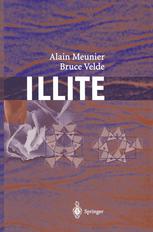

Most ebook files are in PDF format, so you can easily read them using various software such as Foxit Reader or directly on the Google Chrome browser.
Some ebook files are released by publishers in other formats such as .awz, .mobi, .epub, .fb2, etc. You may need to install specific software to read these formats on mobile/PC, such as Calibre.
Please read the tutorial at this link: https://ebookbell.com/faq
We offer FREE conversion to the popular formats you request; however, this may take some time. Therefore, right after payment, please email us, and we will try to provide the service as quickly as possible.
For some exceptional file formats or broken links (if any), please refrain from opening any disputes. Instead, email us first, and we will try to assist within a maximum of 6 hours.
EbookBell Team

0.0
0 reviewsIt is our pleasure to present this large body of information and thoughts of many mineral scientists which has accumulated over decades. Illite is a mineral that has been discovered relatively recently, even though it has great importance in the geological cycles of weathering, sedimentation and burial. Illite is the major potassium mineral among silicates in the surface environment. Potassium represents the only alkaline metal, to be bound in silicate structures during the great chemical reshuffling called weathering. The weathering environment is one of strong chemical segregation, where Si and AI become the resistant, of silicate rocks. Iron forms an oxide and potassium forms residual elements the stable clay illite. Then Si and Al form smectites and kaolinite. Sodium, calcium and to a large extent magnesium are extracted from the solids as dissolved ionic species of the altering fluids. Ca and Mg are reintroduced into solid minerals via carbonate precipitation, and Na remains to make the sea saline. This mineral has been difficult to study because it is of fine grain size, as are all clays: 2 pm in diameter. Illite, along with other clays, had to wait to be discovered until a useful method of X-ray detection became available. With such a tool clays, whose definition was initially based upon the resolving power of an optical microscope (2 ]. lm), could be efficiently investigated. In fact the study of illite parallels the use and development of X -ray diffraction techniques.